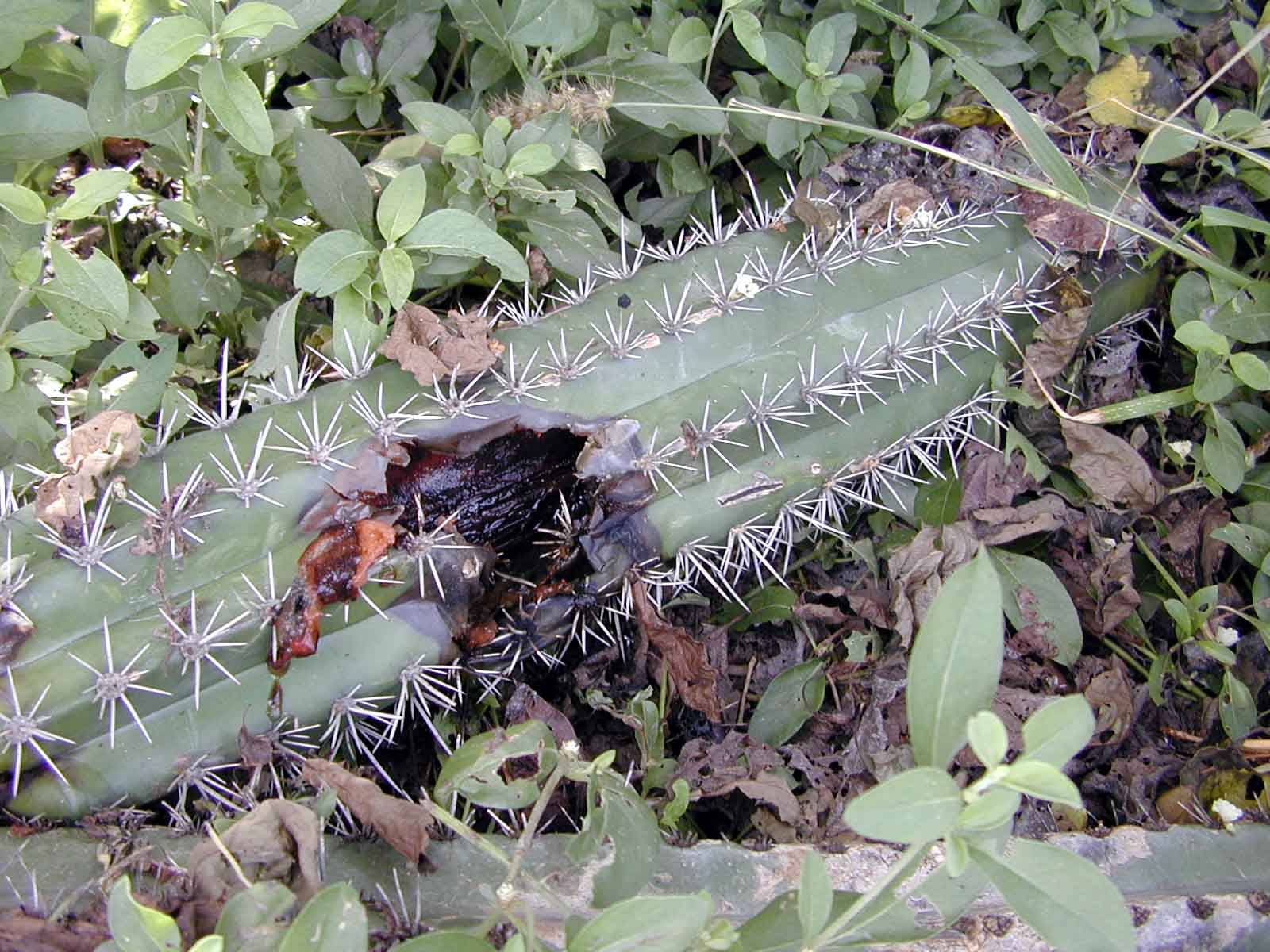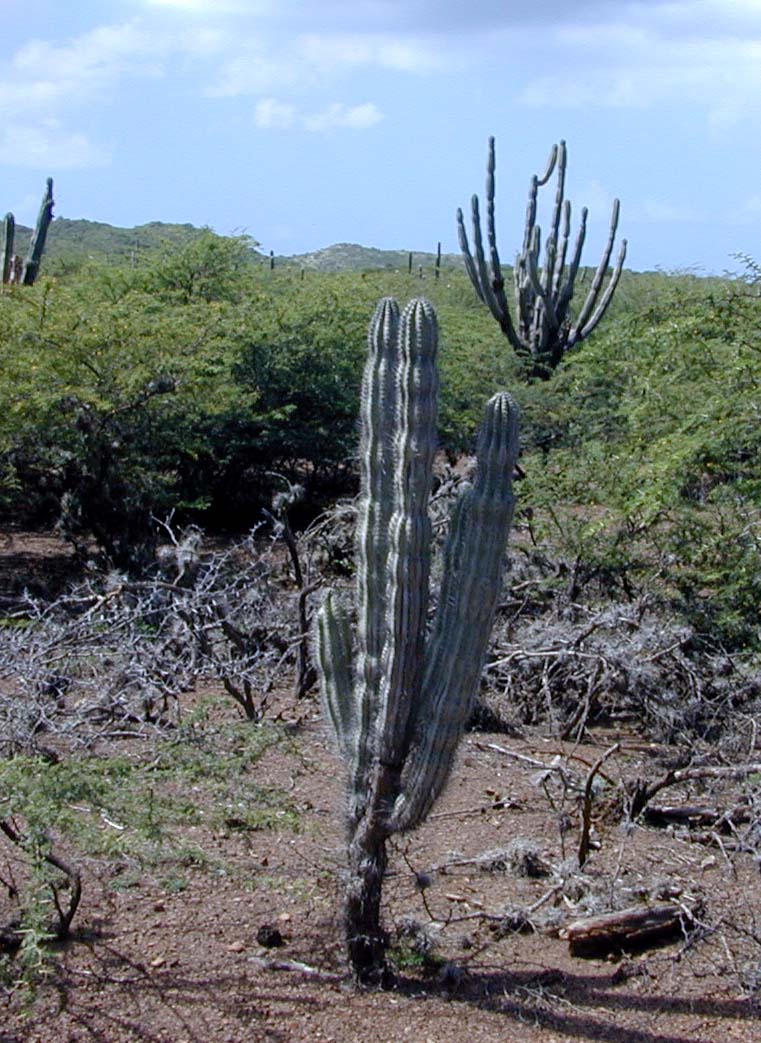Cacti from the Caribbean - Curaçao
This page has pictures of the two columnar cacti sampled on Curaçao
For the cacti sampled on Antigua and St. Maartin/St. Martin, go to:
Second Caribbean Cacti Page
Chilean Cacti Page
Peruvian & Guatemalan Cacti Page
Links to other pages:
Return to my Homepage
Go to my Research Page
Go to TSU Homepage
There were two columnar types sampled on Curaçao. The first, tentatively identified as Stenocereus griseus, found in the next two pictures, had stouter arms (up to 8-9 ribs), was a deeper green, had longer spines, and fewer arms on the plant. No flowers or fruit were observed
This first shot is of a large plant growing by a secondary road
This is a close-up of the spines of the first columnar type:
Here is an example of a rot on a fallen arm (opened and sampled)

The second, tetatively identified as Cereus repandus, was found intermingled with the first in an Acacia-scrub forest. There were no appreciable habitat differences between the two types. The picture below was taken under one of the Acacia trees, hence the dappling. A noticable and constant morphological feature of this type not found on the first type was the presence of deep constrictions on the arms. These occured often enough that they somtimes gave the arm a beaded look, as can be seen in some of the arms below (on the extreme right and left, for example). It does not seem as though the constrictions are always linked to annual growth, as in many columnars, as many arms had new growth that did not begin with a constriction, as also can be seen below in the center. The green parts of the arms had a silvered appearance. The number of ribs did not seem to differ from the first type. No flowers or fruit were seen.

This is a closeu -up of the skin and spines of the first type.
Although the limits of web-resolution might make it difficult to see, the picture below has both types of cacti in it. There are three columnar plants: a large plant in the right half of the shot (second type), another second-type plant on the extreme left margin, and, next to it, a deeper green plant of the first type. Notice that the the second-type plant on the left has many constrictions on its arms while the first-type plant next to it has none. After seeing them, I was always able to assign any plant to one of the two types with reasonable confidence.
Last Updated March 8, 2002